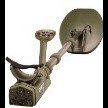Amazed At How Quickly White’s Discussion Faded
-
Similar Content
-
- 5 replies
- 672 views
-
- 45 replies
- 9,474 views
-
- 12 replies
- 1,397 views
-
- 2 replies
- 1,278 views
-
New Member Limited Account And A Full Access / Full Member Account Implemented 1 2 3 4
By Steve Herschbach,
- 34 replies
- 9,025 views
-
- 1 reply
- 27,951 views
-
-











Recommended Posts
Create an account or sign in to comment
You need to be a member in order to leave a comment
Create an account
Sign up for a new account in our community. It's easy!
Register a new accountSign in
Already have an account? Sign in here.
Sign In Now